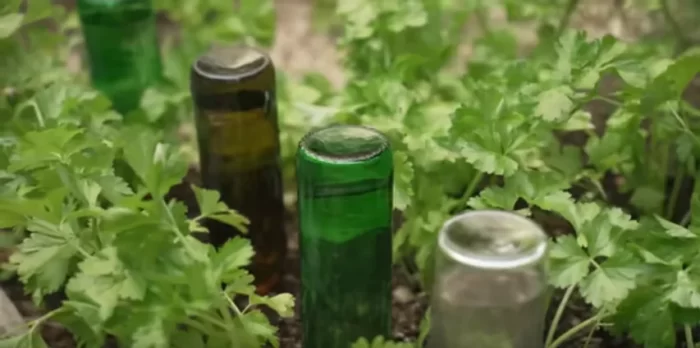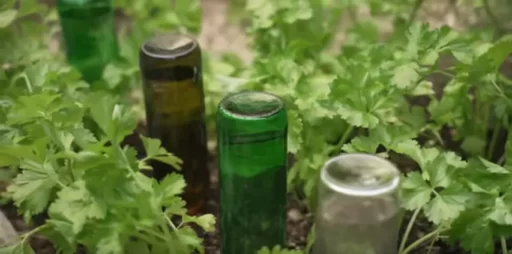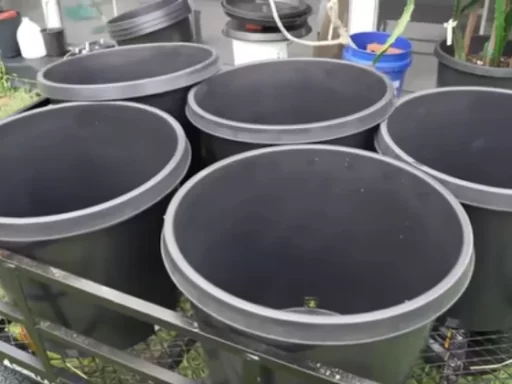Watering is an essential part of gardening, but it can often be time-consuming and wasteful if done incorrectly. Over the years, I’ve discovered several efficient methods to save time and reduce water waste. This article will explore practical strategies to help you conserve water, minimize effort, and ensure your plants receive the hydration they need.
Quick Tips for Efficient Watering
Here are some quick-fire tips that will make your watering process more efficient:
- Create Soil Depressions: When planting crops that require a lot of water, such as squash, create a depression or ring around the base of the plant. This method traps water, preventing it from running off and allowing it to soak into the soil.
- Use Trenches for Rows: When planting rows of crops, dig a shallow trench (around 5 cm or 2 inches deep) and plant along the bottom. This trench holds moisture when you water, maximizing the use of every drop.
- Water Seed Drills Effectively: In dry weather, it’s important to water seed drills before sowing to create a moist environment for the seeds. Pour water into the drill, let it soak, and repeat to ensure the area is thoroughly damp. After sowing, cover the seeds, and they won’t need water for a few days.
Optimizing Water Usage in Containers
Container gardening presents its own challenges, especially when water drains out too quickly. To retain moisture effectively:
- Use a Saucer: Place your container on a saucer or a reservoir to catch excess water. This allows the water to be reabsorbed by the soil. Remember to remove the container from the saucer after two hours to prevent the roots from sitting in water, which could cause root rot.
- “Puddle” Bigger Plants: When planting larger plants, such as fruit bushes, fill the hole with water, let it drain, then fill it again before planting. This ensures a cool, moist environment around the roots, reducing the need for frequent watering.
Watering Methods: Hose vs. Watering Can
While hose pipes are convenient, using a watering can is often faster and more effective. Here’s why:
- Watering Can Efficiency: A watering can releases water faster than a hose, especially during hot days when low water pressure might slow the hose. Dunking the watering can in a water source and quickly watering plants is an effective way to cover large areas.
- Targeting Thirsty Plants: Focus your watering efforts on plants that need it most. Mature plants can often find their own moisture, so concentrate on younger plants or crops with high water needs, such as celery.
Save Water with Ollas

One of the most efficient and ancient methods for watering plants is the use of ollas. Ollas are unglazed terracotta pots that are buried near plant roots. The porous nature of the ollas allows water to seep slowly into the soil as the plant roots draw moisture. This method can reduce water usage by up to 70%.
How to Use Ollas:
- Bury the Olla: Dig a hole near your plant and bury the olla, leaving only the neck exposed. Fill it with water, and the soil will naturally draw moisture as needed.
- Benefits: Since the water is delivered slowly and directly to the roots, there is minimal evaporation. This method is particularly useful in dry climates.
DIY Ollas
If you don’t want to invest in traditional ollas, you can create your own using unglazed terracotta pots:
- Seal the Pot: Use waterproof putty to seal the drainage hole of a terracotta pot. The water will then seep through the pot’s walls rather than draining out of the bottom.
- Bury the Pot: Bury the pot as you would a traditional olla and fill it with water. For larger gardens, consider using two pots stacked together to increase the water capacity.
Efficient Watering for Different Garden Setups
Whether you’re working with raised beds, vegetable gardens, or potted plants, there are ways to streamline your watering process:
- Raised Beds and Rows: In raised beds, trenches and soil mounding help contain water. Using these techniques in vegetable gardens ensures that water reaches the roots rather than evaporating from the surface.
- Containers: Water can quickly run out of containers, but adding a saucer underneath or using terracotta watering spikes can make a significant difference. Terracotta spikes allow for a slow release of water, ensuring the soil stays moist for longer periods.
Maintaining Your Watering System
Once you’ve implemented efficient watering techniques, it’s essential to maintain them. Here are a few tips to keep your system running smoothly:
- Keep Ollas Full: Ensure that your ollas never drop below half full, as this could cause the walls to dry out and lose their effectiveness. Regularly topping them up is key to maintaining moisture levels in your soil.
- Avoid Liquid Fertilizers in Ollas: Avoid using liquid fertilizers in your ollas, as they can clog the terracotta pores. Instead, apply fertilizers directly to the soil.
- Winter Care: In regions with freezing temperatures, remove ollas before the first frost to prevent cracking. Store them indoors until the following growing season.
Frequently Asked Questions
- What is the best way to water plants in a drought?
- Ollas or terracotta watering spikes are effective in reducing water waste and providing plants with slow, steady hydration.
- How often should I water plants using ollas?
- Depending on the plant and weather conditions, ollas may need refilling every 2-7 days.
- Can I use regular pots as ollas?
- Yes, unglazed terracotta pots can be converted into ollas by sealing the drainage holes with putty.
- Why do some plants need more water than others?
- Some plants, such as squash and celery, have higher water requirements due to their larger root systems or water-heavy fruits.
- How can I prevent water runoff in my garden?
- Creating depressions or mounding soil around plants can help contain water and prevent runoff.
- Can I use ollas in container gardening?
- Ollas are typically used in-ground, but smaller terracotta watering spikes can be adapted for container gardening.
- Do I need to use rainwater for my ollas?
- Rainwater is preferable, but tap water can also be used. Avoid using water with liquid fertilizers to prevent clogging.





